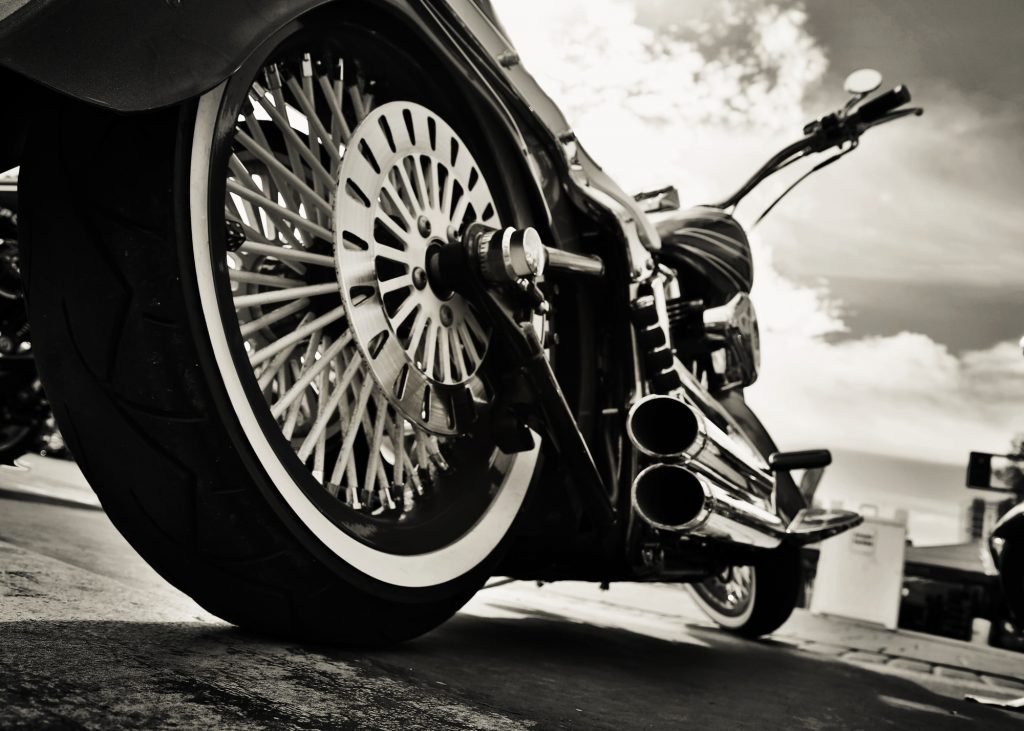New to Motorcycles? Here’s How a Motorcycle Engine Works
Motorcycles have long been considered the rebels of the road. These powerful two-wheeled vehicles are much more exhilarating (and dangerous) to drive than your standard 4-wheeled car or truck.
Because of this, motorcycles have continued to rise in popularity. Since 1998, the number of motorcycles on the road has increased by 34%. If you’re among this once rarefied group of bikers, you should know everything there is to know about the metal beast you’re trusting your life with.
In this article, we’ll be detailing how your average motorcycle engine works.
The Modern Motorcycle Engine
Motorcycle engines work the same way car engines do. They’re made up of an engine block, which contains bored chambers known as cylinders. In this cylinders are pistons and spark plugs. Valves can also be found in these cylinders. They let in air and small amounts of gas that is then ignited by the spark plug, resulting in a small explosion in the cylinder that moves the piston up and down.
This is what is known as internal combustion. This provides the engine power and rotates the tires on your motorcycle. Don’t worry if you’re lost. We’ll break this down further.
Cylinders & Capacity
Most modern motorcycles have between 1 and 6 cylinders. This means that they also have 1-6 pistons, spark plugs, and valves. The number of cylinders, as well as the volume – or capacity – of the cylinders, largely determine the engine’s power.
The power of the engine is most frequently measured as the collective volume of the engine’s cylinders in cubic centimeters, “cc” for short. The smallest motorcycle engines have just 50 ccs and top out at about 35 miles per hour. The largest commercial motorcycle engine is typically 1500 cc, which can go as fast as any sports car.
But it’s what happens inside these cylinders that really give engines their power.
Internal Combustion
The principle behind an internal combustion engine is the same: if you take a high-energy fuel source and place it in small, pressurized space and ignite it, you can create and release a ton of energy in the resultant explosion.
Now, imagine if you were able to trigger hundreds of tiny explosions like this per minute and use that energy to, let’s say, turn the wheels of a vehicle. This is how most motorcycle engines work.
Most modern motorcycle engines achieve this with something called the four-stroke combustion cycle. The four strokes are the following:
- The intake stroke
- The compression stroke
- The combustion stroke
- The exhaust stroke
Remember the cylinders, pistons, valves and spark plugs we mentioned earlier? They all come into play here.
For the intake stroke, the piston (attached to a connecting rod) starts at the top of the cylinder. Then, the valve opens and the piston moves down the cylinder allow a mixture of air and vaporized gasoline to enter the cylinder.
Then for the compression stroke, the piston moves back inside the cylinder compressing the air-fuel mixture and making it denser. This allows for a more powerful explosion.
Once the piston has reached its endpoint, the spark plug emits a spark and the air-fuel mixture explodes, driving the piston further out of the cylinder. This is the combustion stroke.
Lastly, when the piston reaches its other endpoint after the combustion stroke, the valve opens again to release the spent air-fuel mixture. This is the exhaust stroke.
This cycle takes less than a second to complete and happens hundreds of times per minute while an engine is running.
The Transmission System
But how do these explosions translate to the rotational movement of the wheels of your motorcycle?
Well, the pistons in your engine’s cylinders are attached to connecting rods which are then connected to a crankshaft. And on the end of that crankshaft is your engine’s flywheel.
As your pistons move up and down, the connecting rods turn the crankshaft, which then turns the flywheel in a rotational, clockwise fashion extremely quickly. This rotational movement is then transferred to your bike’s wheels through a set of gears known as the transmission system.
The Gearset
Think about your traditional 6 or 7-gear bicycle. You understand intuitively how this works. You push the pedals with your feet and if you want to generate more power, you switch to a bigger gear. This is because one rotation of the pedal with your feet creates a 1 full rotation of a larger gear. This makes your bicycle travel a larger distance.
The gear set on a motorcycle works in exactly the same way, except instead of your feet providing the power, the engine’s pistons are. Motorcycles typically have between 4-6 gears.
The Clutch
However, unlike bicycles, motorcycles have something called a “clutch” that connects and disconnects from the engine’s flywheel and thusly applies or removes power from the motorcycle’s wheels.
The clutch is essentially a set of spring-loaded plates that connect the engine’s flywheel and crankshaft to the gears of the transmission. When the clutch is engaged, your motorcycle moves. When it’s disengaged, the engine is removed from the chain of gears that provide power to the wheels.
It’s like if your feet on a bicycle were always pumping, but someone called The Clutch came and removed the pedals. Your feet, or pistons, keep moving, but their power isn’t being transferred anywhere.
The Drive System
The last link in this mechanical chain of events is the drive system, which works identically to the literal chain of a bicycle. In many motorcycles, a literal chain is attached to a sprocket connected to the rear tire of a motorcycle and is connected to the “output shaft” of the transmission.
So as the transmission gears spin, so too does the chain and the rear wheel of the bike. This, ultimately, gives a motorcycle its forward motion. This is a basic summary of engine drive systems but there is so much to learn more about.
Want to Learn More About Motorcycles?
Hopefully, this article has given you a solid overview of how a motorcycle engine works. The jargon is a bit technical, but ultimately, it’s a very simple process. If you’d like to learn more about the ins and outs of motorcycles, be sure to check out the rest of our blog.



